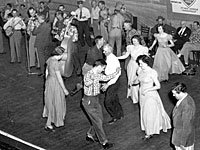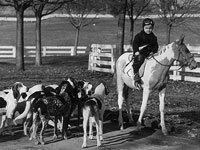Conner Prairie brings Indiana history to life with the perfect mix of education, adventure and fun! The park offers an authentic look at the 1800s through engaging, hands-on experiences. These experiences cover a variety of K–12 Indiana academic standards including social studies, language arts, science and math. The park has hundreds of scenic acres and many historic buildings. The museum is an affiliate of the Smithsonian Institution and is committed to multi-sensory learning. Also, Conner Prairie is a proud recipient of the National Medal for Museum and Library Service, awarded by the Institute of Museum and Library Services. This award recognizes institutions for outstanding social, educational, environmental or economic contributions to their communities.
The site includes several historic areas that cover a variety of themes. In 1836 Prairietown, step back in time and interact with staff portraying residents of the town. At the Conner Homestead, tour the brick house William Conner built in 1823 and visit the Loom House to find out about textile processes. Also in the Conner Homestead are opportunities to meet farm animals and try a hand at dipping candles. In the Lenape Camp, find out about Lenape (Delaware) Indian history and culture while exploring a wigwam and a trading post. The 1859 Balloon Voyage exhibit presents the story of pioneer and aeronaut John Wise and his attempted flight from Lafayette to New York. For an additional fee and weather permitting, Conner Prairie offers a flight in a tethered, helium-filled balloon that can accommodate up to 25 people and rises to around 300 feet. Inside the Welcome Center, visit Science Lab for a look at science concepts and the history behind them.
Conner Prairie's newest experience, 1863 Civil War Journey: Raid on Indiana, immerses you in the story of Confederate General John Hunt Morgan's cavalry raid on Indiana. Using theatrical wizardry, including video, sound, staging and Conner Prairie interpreters dressed in authentic period costumes, guests are asked to enlist to defend their state from the raiders. How would you react to a call to arms? Become fully engaged in this pivotal moment in Indiana history.
In addition to general park touring, Conner Prairie offers special staff-led programs and seasonal programs. Also, from November through March, Conner Prairie offers outreach programs at schools and other community organizations. Advance reservations are required for all programs including school groups booking the general self-guided tour.
Some buildings in Prairietown and Lenape Camp are not wheelchair accessible. However, in the case of non-accessible buildings, staff can come outside to interact with those unable to enter their building. A map showing which buildings are accessible is available on the website.
For more details and information, see the Conner Prairie website.


